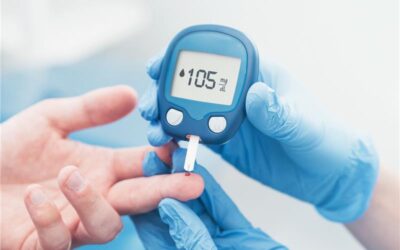Case Study
Pollution Exposure and Skin Diseases
Multi-omics signatures reveal early signs of skin diseases associated with pollution exposure.
The metabolomic signatures identified by Metabolon revealed macromolecular alterations by pollution that could develop into clinical signs of early skin pigmentation and/or other imperfections.
The metabolomic signatures identified by Metabolon revealed macromolecular alterations by pollution that could develop into clinical signs of early skin pigmentation and/or other imperfections.

The Challenge: No Mechanistic Link Between Pollution Exposure and Skin Diseases
Pollution is responsible for 15% of all deaths globally, and 275 million disability-adjusted life years. A major contributor to pollution is particulate matter (PM), inhalable particles found in the air that are 10 µm or smaller. PM is often associated with toxic chemicals such as heavy metals or polycyclic aromatic hydrocarbons (PAHs). A major mechanism by which PM exerts its detrimental effects is through the generation of oxidative stress which contributes to extrinsic skin aging.1 Previous studies of in vitro skin models have shown that exposure to PAHs leads to the disruption of several cellular processes.1 However, the molecular mechanisms that link pollution exposure and its impact on clinical manifestations of illness remain to be deciphered.
Metabolon Insight: Identified Differentially Regulated Metabolites in Individuals Living in a Polluted Environment
The participants of the study were assessed for the skin clinical parameters: acne, wrinkles, pigmented spots, etc., to assess the effect of chronic exposure to pollution on exposed areas of the skin. PAH can be identified in blood and hair cortex, so pollution exposure was determined by quantifying 39 parent PAHs and their monohydroxy metabolites in hair samples collected from the study participants. Non-invasive facial skin samples (D-Squame) were collected from 134 healthy women (24 to 45 years) living for at least 15 years in the Chinese cities of Baoding (used as a model of polluted area) and Dalian (control area with lower level of pollution).1 Women from the two cities (polluted and less polluted) showed distinct metabolic profiles and alterations in skin microbiome. The Metabolon Global Discovery Panel identified 350 metabolites using skin samples. Amino acid and fatty acid metabolism, gamma-glutamyl amino-acids, and urea cycle intermediates differed significantly between the Baoding and Dalian groups.
Additionally, there is complex interplay between the host metabolism and its microbiota occurring on the skin surface. Therefore, the skin microbiome was analyzed using bacterial 16S rRNA and fungal ITS1 amplicon sequencing using metagenomics analysis. Both exposure groups showed distinct metabolic profiles and alterations in skin microbiome.
The Solution: Pollution Effects Linked to Skin Microbiome Generated a Multi-omics Signature to Identify Effects of Pollution
The Global Discovery Panel identified 350 metabolites by comparing samples from patients that live in polluted and non-polluted areas. Metabolomic analysis complemented targeted proteomic analysis to characterize pollution-dependent biochemical events. Together these analyses suggest that chronic exposure to pollution induces a dynamic metabolic state that must simultaneously manage damage and repair mechanisms.
This multi-omics approach identified 39 PAH and 143 microbes and was used to develop a multiblock data analysis method to identify multi-omics signatures to predict skin dysfunctions (acne, wrinkles, pigmented spots etc.) in a polluted environment. The results pointed to a link between the microbiome and the impact of pollution exposure.
The Outcome: Multi-omics Signatures Could Identify Early Skin Imperfections in Clinic
The metabolomic signatures identified by Metabolon revealed macromolecular alterations by pollution that could develop into clinical signs of early skin pigmentation and/or other imperfections. This multi-omics signature approach can be used as a model to generate molecular maps for other human diseases.
References
1. Misra N, Clavaud C, Guinot F, et al. Multi-omics analysis to decipher the molecular link between chronic exposure to pollution and human skin dysfunction. Sci Rep. Sep 15 2021;11(1):18302. doi:10.1038/s41598-021-97572-1




